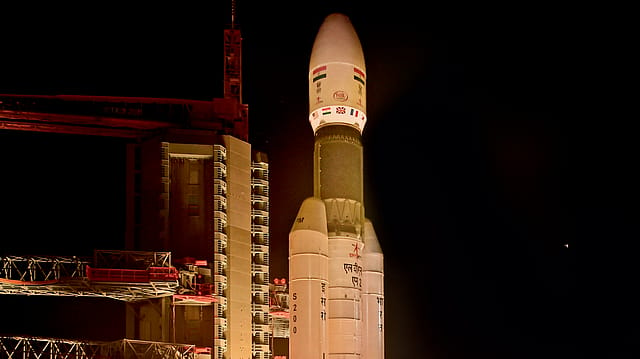India’s $44 billion space push: Government clears ₹1,000 crore fund to back startups
ADVERTISEMENT

With ambitious plans to expand its share in the global market from $8 billion to $44 billion by 2033, India’s space sector is at an inflection point, transitioning from a government-driven initiative to a commercial powerhouse.
To catalyse this growth, the government is also supporting the sector through financial incentives. At the conclave on Adoption of Space Applications for Business Growth, organised by the Confederation of Indian Industry (CII) in collaboration with the Department of Space, Dr Pawan Goenka, chairman, IN-SPACe, Department of Space, Government of India, announced that the government has approved a ₹1,000 crore venture capital fund to back space startups. “We are creating an ecosystem where businesses can co-develop AI-powered analytics, remote sensing solutions, and next-generation connectivity applications. The demand is there; we need to create scalable business models to meet it.”
“If we look back 50 years, we will agree that Dr. Vikram Sarabhai’s vision has come true,” said Dr Prakash Chauhan, director of the National Remote Sensing Centre (NRSC), ISRO, while noting that India’s space journey, unlike other nations, has been rooted in societal benefits rather than military applications. “Today, there is no sector that does not utilise space technology. However, our contribution to the global space economy remains small, and the government's vision is to increase it to 8-10% by 2040,” he added.
The global space economy is already valued at approximately $440 billion and is projected to reach $1 trillion by 2040. When factoring in the broader impact of space applications on other industries, the total economic influence could exceed $2 trillion, as per experts.
“The real money-making lies in the application side, yet India has barely scratched the surface. Only 10% of the potential market has been explored,” shared Dr S Somanath, former chairman of ISRO. He added, “Our focus has been on demonstrating applications to the government rather than scaling them for commercial use. This must change if we are to achieve our space economy targets.”
January 2026
Netflix, which has been in India for a decade, has successfully struck a balance between high-class premium content and pricing that attracts a range of customers. Find out how the U.S. streaming giant evolved in India, plus an exclusive interview with CEO Ted Sarandos. Also read about the Best Investments for 2026, and how rising growth and easing inflation will come in handy for finance minister Nirmala Sitharaman as she prepares Budget 2026.
He pointed out several areas where space-based data could create direct business opportunities, such as marine spatial planning, solar energy forecasting, and mineral exploration. “Satellite imagery is critical for land digitisation, infrastructure development, and even environmental certification. The European Union, for instance, mandates deforestation-free certification for coffee growers using remote sensing data. Similar opportunities exist in India, but they remain largely unexploited,” he added.
There was also a unanimous call for the need for greater private-sector participation. “While India has achieved remarkable success in space technology, we have underleveraged its applications for industry growth. The 2020 space reforms aimed to bridge this gap, and today, over 250 startups are actively innovating in the space domain. The next step is ensuring that businesses across sectors—from logistics to finance—integrate space applications to enhance efficiency and profitability,” said Dr Goenka.
One of the key concerns raised during the conclave was the underutilisation of satellite data. NRSC receives nearly one terabyte of earth observation data daily, but less than 30% of it is effectively used. “This is where AI and machine learning must play a role,” Dr. Chauhan explained. “We need robust analytics engines to convert raw satellite data into actionable insights for businesses. Companies working on edge computing and real-time data processing have immense opportunities here.”
Moreover, India has over 10,000 km of coastline and the country’s growing role in the blue economy is becoming increasingly significant, with a strong focus on marine spatial planning and coastal monitoring. "Mapping the coastline for aquaculture, shipping, and energy projects is a massive business opportunity. Similarly, the mining sector must integrate remote sensing to ensure compliance with government regulations,” opined Dr Chauhan.
Additionally, the integration of space applications with existing industries could significantly boost economic output. Dr Goenka cited examples of how logistics companies could reduce fuel costs by 20% using satellite-driven route optimisation, and how insurance firms could minimise fraud through real-time earth observation data. While these solutions exist today, the adoption remains low.
“The upstream sector—building satellites and launch vehicles—depends on the downstream industry. Without demand for applications, the supply side cannot scale. The focus must be on unlocking the commercial potential of space-based solutions,” concluded Dr Somanath.
